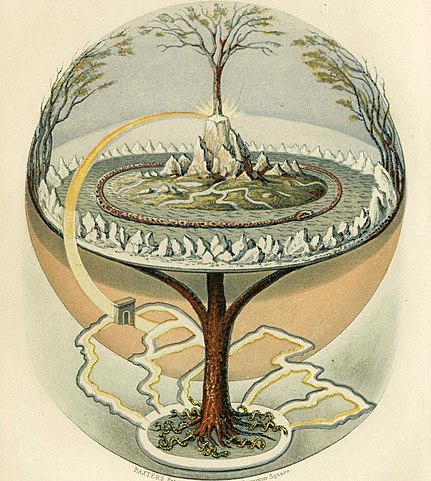The Tree of Life is a powerful and deeply symbolic concept that transcends cultures and religions. It has been depicted in various forms throughout history and holds diverse meanings across different belief systems and traditions. Here, we explore the mystical power and symbolism associated with the Tree of Life:
1. Cross-Cultural Symbolism:
- Universal Symbol: The Tree of Life is often considered a universal symbol that appears in cultures and spiritual traditions around the world. It embodies themes of interconnectedness, growth, and the cyclical nature of life.

2. Connection to Nature:
- Natural World: The Tree of Life is closely associated with nature and the idea that all living beings are interconnected and dependent on one another. It represents the harmonious relationship between humanity and the natural world.
3. Spiritual and Religious Significance:
- Abrahamic Religions: In Christianity, Judaism, and Islam, the Tree of Life is often associated with the Garden of Eden. It represents spiritual enlightenment, knowledge, and the relationship between humanity and the divine.
- Kabbalah: In Jewish mysticism (Kabbalah), the Tree of Life is a central symbol representing the structure of creation, the divine emanations, and the path to spiritual enlightenment and unity with God.
- Hinduism: In Hinduism, the concept of the Ashvattha Tree, often referred to as the Peepal tree, is similar to the Tree of Life. It represents the eternal, interconnected nature of the universe and the self.
4. Balance and Harmony:
- Balancing Opposites: The Tree of Life often symbolizes the balance between opposites or dualities, such as life and death, good and evil, and light and darkness. It teaches that these dualities are part of a greater whole.
5. Growth and Renewal:
- Cyclical Nature: The Tree of Life is sometimes associated with the cyclical nature of life, death, and rebirth. Its branches and roots represent growth and renewal, as well as the continuity of existence.
6. Spiritual Journey:
- Path to Enlightenment: In many spiritual traditions, the Tree of Life serves as a guide on the path to spiritual enlightenment and self-discovery. It symbolizes the journey of the soul toward higher consciousness.
7. Modern Interpretations:
- Personal Growth: In contemporary contexts, the Tree of Life can symbolize personal growth, self-improvement, and the pursuit of wisdom and knowledge.
- Family and Heritage: It is also used to represent family connections and heritage, with each branch representing a different family member or generation.
8. Art and Jewelry:
- Decorative Art: The Tree of Life is a popular motif in art, jewelry, and decorative items. Its intricate and symbolic design often serves as a reminder of its deeper meanings.
In summary, the Tree of Life is a mystical and powerful symbol that embodies interconnectedness, growth, and spiritual enlightenment. It has profound significance in various religious and spiritual traditions and continues to be a source of inspiration and contemplation in contemporary society. Its enduring appeal lies in its ability to convey deep and timeless truths about the nature of existence and our place within the cosmos.











